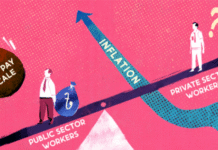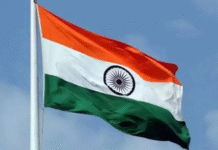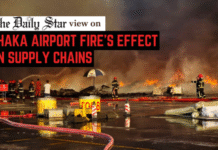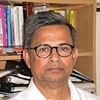
Last update on: Sun Jul 2, 2023 09:00 PM
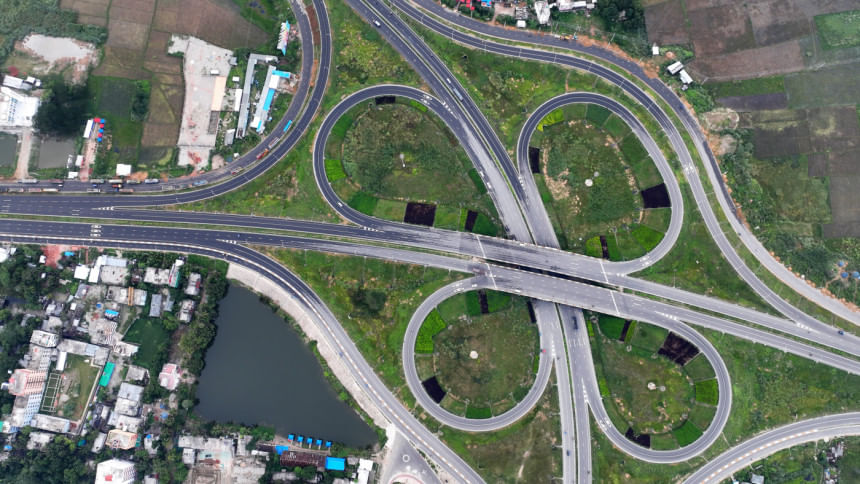
I read with interest a piece published recently in The Daily Star on the first anniversary of the Padma Multipurpose Bridge (PMB) opening. The country was euphoric this time last year due to the inauguration of this bridge by Prime Minister Sheikh Hasina. Although it is too early to judge its full impacts and benefits, there are already many positive stories on how the PMB has transformed the country – thanks to the bridge’s immediate impact on transport and faster connectivity to the Barishal and Khulna regions in the southwest.
The Padma Bridge entered the planning stage following the completion of the Jamuna Bridge in 1998. A pre-feasibility study was conducted in 2000 by Rendel, Palmer and Tritton, followed by a full-fledged feasibility study (FS) by Nippon Koei in 2003-2005, funded by Japan International Cooperation Agency (JICA). Four potential sites (Paturia-Goalundo, Mawa-Janjira, Dohar-Charbhadrasan, and Chandpur-Bhedarganj) were considered during the FS, and the Mawa-Janjira site was recommended by the JICA team. The detailed final technical design of the Padma Bridge (2008-2010) was funded by the Asian Development Bank (ADB).
The double-deck multipurpose bridge designed by New Zealand-based firm Maunsell-Aecom was a real accomplishment and an “engineering feat.” However, long before the project construction was to begin, the co-financiers (ADB, JICA, and the World Bank) withdrew their funding commitments due to a dispute with the government of Bangladesh over alleged corruption in the selection of contractors and management consultants. The situation led to serious political controversy, with allegations and counter-allegations between the government and the World Bank. Finally, in 2013, Prime Minister Sheikh Hasina strongly stated that the bridge would be built by Bangladesh without any external assistance. Accordingly, construction of the main bridge and other components commenced in November 2014. With pride and confidence, the bridge was opened to the public on June 25, 2022.
The 6.15km-long Padma Multipurpose Bridge – the longest in South Asia – established a fixed, reliable, and safe crossing over the Padma River from Mawa to Janjira and to the southwest region, reducing four hours of ferry commute to merely a 10-minute ride over the bridge. The bridge connects the southwestern region (which has over 35 million people) with the capital of Dhaka, boosting business and the movement of export goods between the Mongla seaport and the rest of the country.
The improved transport network has now reduced the hauling time of vehicles and enhanced economic activity, boosting the national GDP, according to one estimate, to roughly one percent annually. Further, as a result of the new link and increased accessibility, the country’s southwest now experiences higher levels of economic activity, increased mobility, migration, and new employment opportunities, with impacts of poverty reduction in the region.
Those affected by the construction of the bridge and its other components (that is, approach viaducts, river-training work, 14km of approach roads, bridge-end facilities, toll plazas, service areas, offices, etc) were properly resettled and rehabilitated in four resettlement sites in Mawa and Janjira. The resettlement plan was designed following the “good practices” of the Jamuna Bridge experience. Monetary compensation was made as per the replacement cost for land and other assets prior to displacement. The displaced households had options of either moving to resettlement sites or taking “self-managed” resettlement packages with all the applicable compensation and benefits. Close to 2,000 households opted for self-managed resettlement and moved to existing villages in Mawa and Janjira areas.
Four resettlement sites were built with provisions for house plots for over 2,400 households, and including civic amenities such as internal roads, water supply, electricity, schools, a market area, and waste management systems. The resettlers in the four sites are largely from the affected villages along the bank, where they had experienced multiple displacements in the past due to annual endemic erosion. In contrast, they now live in secure, semi-urban townships with access to employment and other social development support – particularly assistance for poor women and vulnerable groups, and training and livelihood programmes by a reputed non-government organisation (NGO) hired by Bangladesh Bridge Authority (BBA). In sum, Padma Bridge established a “development approach” to resettlement management, benefitting those affected by the project.
The benefits and potentials of the Padma Bridge megaproject are yet to be realised. Currently, only the four-lane divided motorway on the upper deck is operational. The dual-gauge rail line on the lower deck will be completed soon. The fibre optic cable and the gas pipeline on the bridge, separate but parallel power transmission line, the railway stations in Mawa and Janjira, and the eco-tourism centre on the Janjira side will ultimately fundamentally transform the region, making the Padma Bridge a real transportation “hub” and a key driver for economic growth and social change. Furthermore, the fixed link has opened up a real possibility for expanding Dhaka city to Mawa and to the southwest across the Padma Bridge to Shariatpur and Madaripur, which should be carefully studied by the government. To me, the future of Dhaka as a liveable city lies across the Padma Bridge.
Dr Mohammad Zaman was a member of Jica and Maunsell-Aecom Team and led the Social and Environmental Management Planning for the Padma Bridge project. His recent edited book (with co-editor Hafiza Khatun) is titled ‘Development-Induced Displacement and Resettlement in Bangladesh: Case Studies and Practices.’

